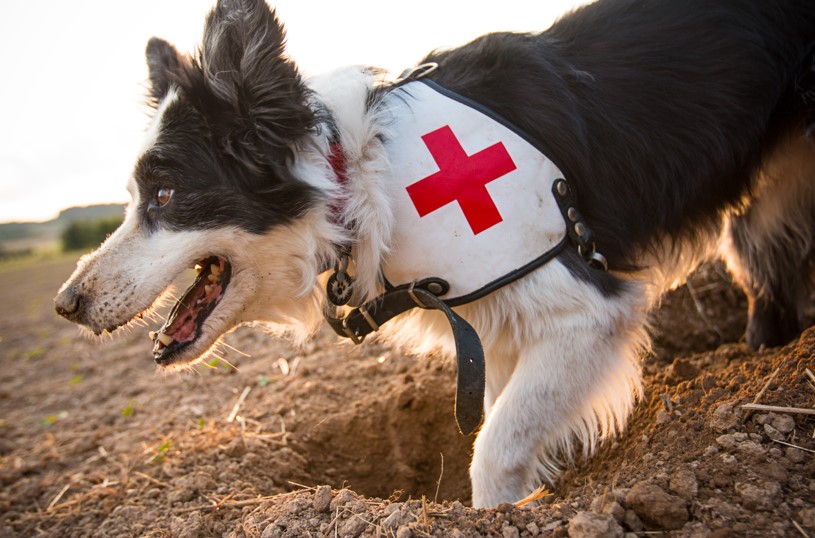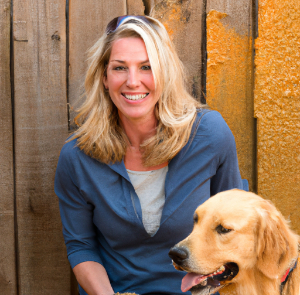
Selecting the right dog for Search and Rescue (SAR) operations is crucial for establishing a successful SAR dog team. On the other hand, an ill-suited dog or handler can lead to disappointment. SAR dog handlers generally focus on training dogs from three distinct categories (Pet Dog, Adopted Dog, Purpose-Bred SAR Dog).
If you're a pet dog owner and are looking to become part of a canine search and rescue (SAR) team, it is important to be aware of the necessary mindset for this undertaking. It is more than just another activity for your pet and requires different approaches and attitudes.
Before starting the SAR training for your pet, you must receive personal training as well as a well-grounded knowledge of the K9 aspect of SAR. One mistake that pet owners make is thinking of SAR training for their dog as just another activity to do with their pet. A dog is sensitive to its handler's feelings, reactions and sight and smell signals; thus, it is important to recognize this communication and use it to your benefit when training your pet.
Additionally, when dealing with SAR work, it is important to not bring any ego or romantic notions. SAR obligations are serious and require hard work and commitment as well as considerable amounts of time and effort in order to achieve success. The SAR dog handler must have great dedication and focus to complete SAR work.
Quick Tips:
1. Before joining a canine SAR team with your pet dog, you must be trained as a rescue person and specialize in the K9 component.
2. It is important to keep in mind that SAR work is not just a game for your pet.
3. The SAR dog handler must recognize the ability of dogs to sense their mood and attitude.
4. Ignorance of how dogs and humans communicate can cause training issues.
5. The SAR dog handler must approach the work with respect and without any preconceptions.
Bringing home an adopted dog and training it for search and rescue work can be a challenge due to the mystery that surrounds the dog's initial history. Not knowing the specifics of how the dog was raised and the potential for behavior issues makes it important to be informed on the challenges of training an adopted dog for SAR work.
When looking to adopt a dog, it is beneficial to consider purchasing from a commercial breeder or pet shop if possible. Mixed-breed dogs or those obtained from shelters should consider having a DNA test to gain insight into the characteristics that influence the way the dog reacts to their environment.
It is plausible that the adopted dog may possess behavioral and/or training issues, thus requiring professional help to ensure successful training. In some cases, a behaviorist or trainer may be needed to determine any associated risks with the type of training in order to prevent further issues from arising.
Quick Tips:
1. Obtaining an adopted dog with the purpose of training it for search and rescue is potentially hazardous because of its unknown background.
2. Most adopted canines are relinquished due to behavioural issues instigated by their former carers.
3. The majority of adopted pooches available for adoption come from kennels or pet stores, and mixed breed dogs typically come from shelters.
4. Behaviourists believe DNA tests on adopted or mixed-breed dogs can be the key to understanding the genetics that affect how a dog perceives and responds to its environment.
5. Adopted dogs may require specialist help with their behaviour and/or training.
Those considering getting involved in Search and Rescue work with their canine companions may find purpose-bred SAR dogs to be an ideal option. Such dogs are bred and raised specifically for the purpose and come with several advantages compared to pet or adopted "rescue" dogs.
With purpose-bred SAR dogs, handlers are not required to start from scratch with training, as the dogs will often have had professional instruction prior to being acquired. Additionally, as they are typically purebred and come from reputable breeders, the reliability and predictability of the dog can be higher. Furthermore, thorough records of the dog's genetic composition and history can provide valuable insight into the animal's physical and behavioural make-up, allowing for more efficient training and handling.
Retirement for SAR dogs typically comes between five and seven years of service. If a handler has had a successful first dog, they may look for the same breed or type of dog to replace it. Many will visit a breeder and get a puppy to train and prepare for a search and rescue role. Smaller dogs tend to have longer lifespans, meaning they can work longer than larger dogs, making them ideal for SAR.
Overall, purpose-bred SAR dogs provide an invaluable service, and may be an ideal option for many prospective SAR handlers.
Quick Tips:
1. SAR dogs selectively bred and raised for search and rescue operations.
2. Professional breeders and trainers usually prepare these purpose-bred SAR dogs.
3. These specialized canines usually cost more than usual pet dogs or rescued animals.
4. Often, these purebred dogs come from certified breeders.
5. Knowing the background and genetics make it simpler to educate and guide purpose-bred SAR dogs.
Finding the right breeder for your Search and Rescue (SAR) dog can be a challenge, especially if you've already got a SAR dog from a different breeder or if the breeder you previously worked with no longer breeds puppies. Fortunately, there are useful strategies for finding the right breeder and making sure you end up with a dog that will excel at SAR duties.
Start by asking other SAR handlers who have good dogs where they purchased their dogs, as many people are more than happy to provide referrals. Once you find a good breeder, make sure you conduct an interview to ensure they specialize in breeding dogs for work, rather than show. Ask them about their breeding goals and what they look out for in puppies. If they breed show dogs, it is important to note that these are typically much different - in size, coat texture, and temperament - than their working dog counterparts. Show dogs aren't necessarily bred for the same level of stamina or intelligence as working dogs, so make sure your breeder is focused on the latter.
Additionally, take note of whether or not the breed has developed a split between those with working instincts and those without. It would be unfortunate to end up with a pup that has a different set of instincts than you're looking for. Ultimately, by doing your research ahead of time, you can ensure you end up with the right SAR dog and breeder.
Show dogs and field dogs vary in multiple ways. Show dogs possess an elongated top line and a voluminous fluffier coat, while field dogs possess a squarer body shape, are more petite in size, and possess a firmer and shorter coat that is engineered to repel dirt and avoid getting covered in burrs. Field dogs normally have more endurance, intellect and work capabilities than show dogs, since the latter mostly saunter around in a show ring.
On the other hand, field dogs must be able to prove their hunting ability, stamina, intelligence, and willingness to work in order to be considered for a breeding program. This is why it is important to find a breeder that breeds dogs for work, rather than show, if you're looking for a SAR dog. It has only taken a few short years for some breeds to develop a split between those that still retain their working instincts, and those that do not, so it's important to research the breed and find a breeder that is focused on producing working dogs.
Q: What are SAR dogs?
A: SAR dogs, or search and rescue dogs, are highly trained dogs that assist in disaster response efforts. They use their incredible sense of smell to locate missing persons and bring them to safety.
Q: What should be taken into account when looking for a breeder for a new SAR dog?
A: A successful match depends on finding the right breeder for the job. Interviews should be conducted to make sure the pup is up to the standards needed for SAR work - seeking someone who specializes in working dogs as opposed to show breeds is recommended.
Q: How do we ensure retired SAR dogs stay comfortable and happy?
A: Retired SAR dogs need regular vet visits, a safe environment, nutritious meals, and activities to keep them occupied. They deserve lots of love and respect - just like they did while they were working!
Q: What is the history of search and rescue dogs?
A: The use of search and rescue dogs can be traced back to the use of Red Cross dogs during World War I. They were initially trained to bark at the location of wounded soldiers, but this method was changed to picking up a designated item. Today, search and rescue dogs have been used in various disasters around the world, such as earthquakes, and have proven to be a valuable asset in saving lives and recovering bodies.
Q: How do SAR dogs locate missing persons?
A: SAR dogs use their keen sense of smell to quickly locate missing persons. They work closely with their human handlers to search areas that would be too dangerous or time-consuming for human teams to search.
Q: What breeds are best suited for search and rescue work?
A: Many breeds can be trained for search and rescue, but some of the most commonly used breeds include German Shepherds, Labrador Retrievers, Golden Retrievers, and Belgian Malinois. The breed chosen will depend on the specific requirements of the search and rescue organization, as well as the individual dog's temperament and ability.
